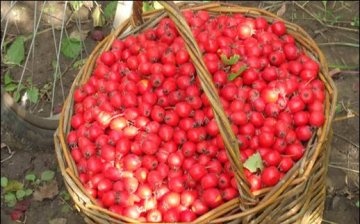Hawthorn: care and maintenance
Hawthorn, which is extremely easy to care for, has very tasty and at the same time healthy fruits. You can not only make jams and marmalades from them, but also dry and brew them as tea, and also use them together with flowers to fight insomnia, coughs, shortness of breath, asthma and hypertension.
The hawthorn, which will not cause much trouble, should be planted in sunny areas, placing the plants so that at least one and a half meters of free distance remains between them. Young bushes grow extremely quickly, but they begin to bear fruit only after five to six years. To grow a more powerful plant, you can fertilize the soil in the planting pits with a few buckets of compost and a little nitrophoska. It is also advisable to avoid close proximity of such plants as pear, cherry and apple tree in order to avoid being damaged by their common pests.
Caring for this crop is reduced to the regular loosening of the land around the bushes, weeding and removal of weeds, feeding, as well as the formation of the crown. The essence of the last operation is to timely cut the crown to a certain height, thereby stimulating the formation and development of lateral branches. It is also very important to fertilize the hawthorn, and this must be done a year after planting before the beginning of fruiting in every fall and spring. For autumn feeding, nitrophoska diluted with water is used, and for spring feeding, any nitrogen fertilizers, for example, urea, are used. In the fruiting phase, it is advisable to fertilize the soil for the plant with liquid sodium potassium humate or "Ideal".




We planted hawthorn and rose hips a few years ago as a hedge in our area. They do not require much attention and care and annually provide us with useful berries for the preparation of medicinal infusions.